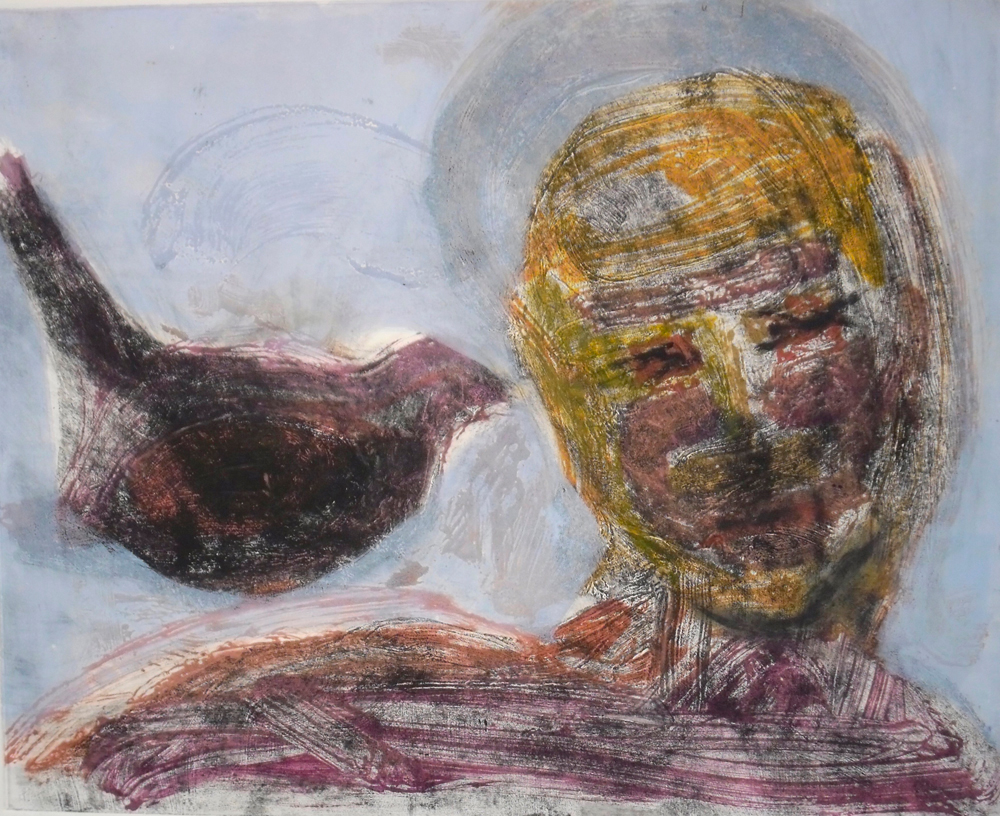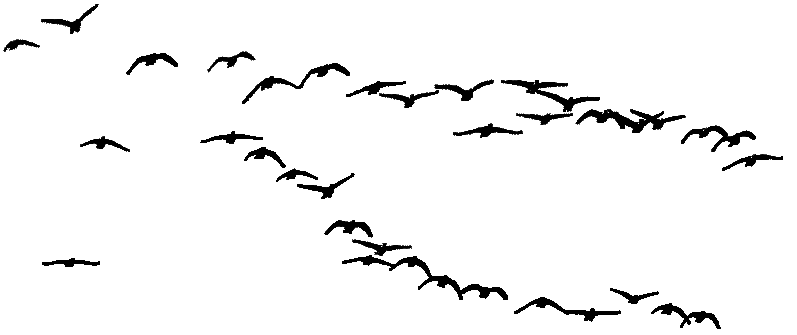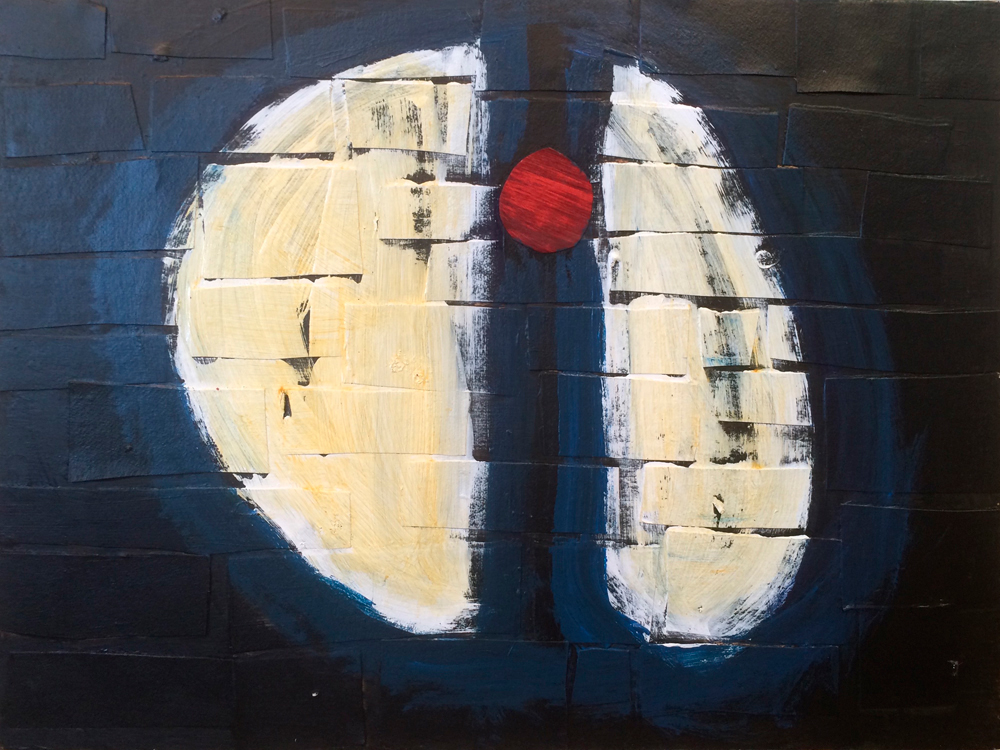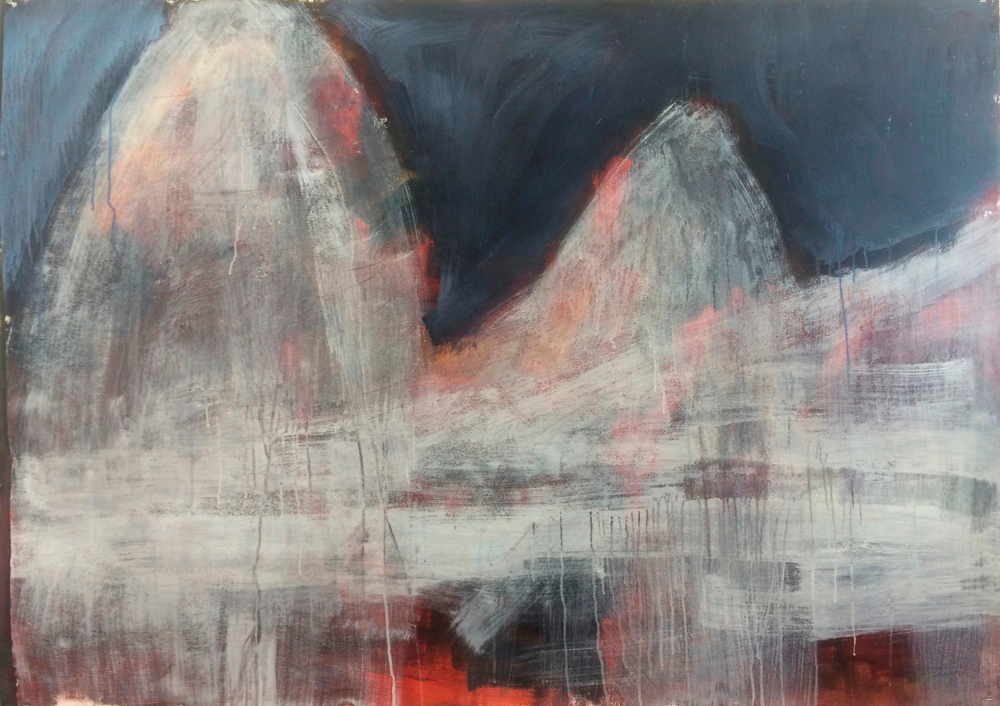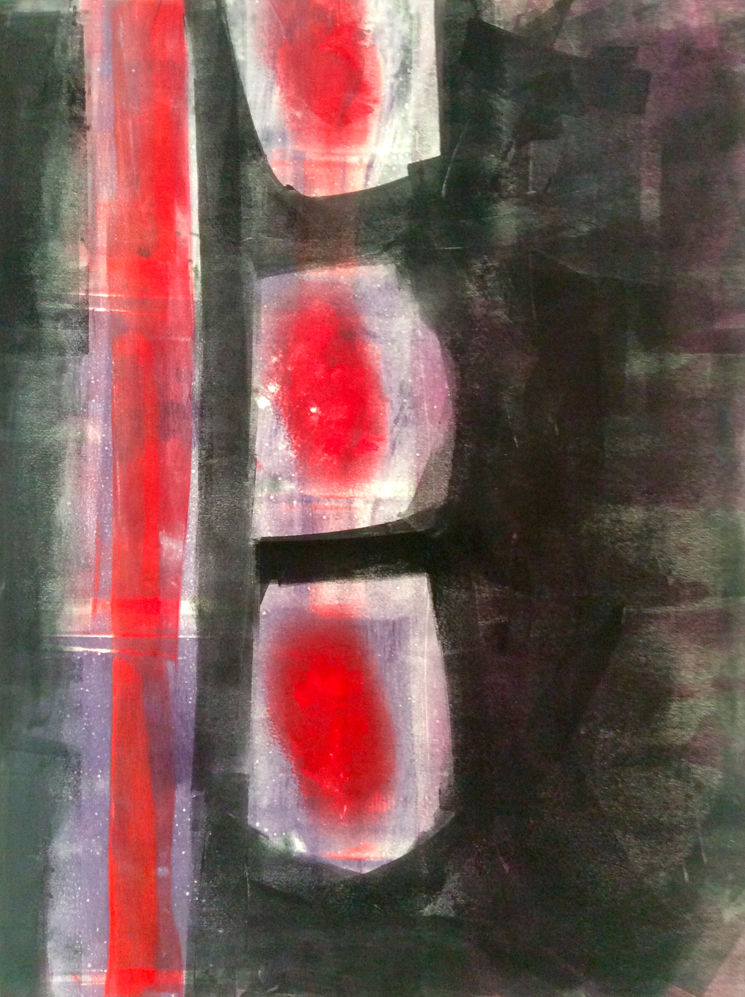James Spartz
Three Perspectives on the Good Life: Carl Rodgers, Yi-Fu Tuan, and Scott & Helen Nearing
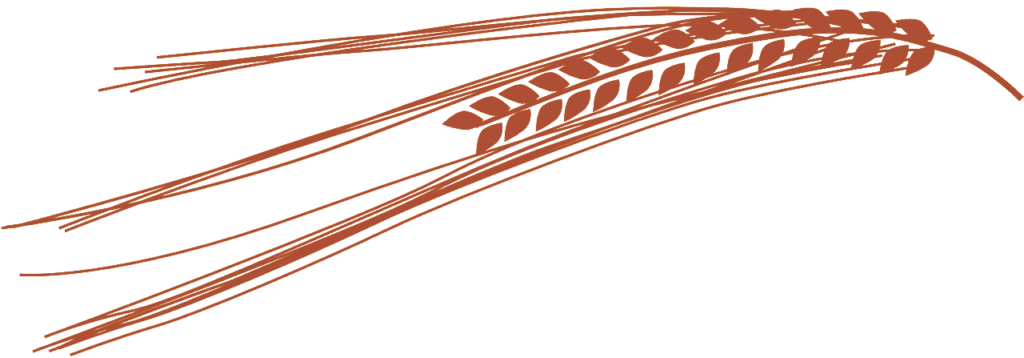
Pursuit of the good life goes by many names. To the ancient Greeks it was Eudaimonia – thriving, flourishing, or well-being. Synonyms include plentitude, harmony, or the equanimity of Buddha’s Noble Eightfold Path. In South America, Amazonian and Andean indigenous philosophies remain influential and, in countries like Bolivia and Ecuador, ways of good living or living well emerge as buen vivir in Spanish or sumak kawsay in Kichwa. By any name, “the good life” remains a synecdoche of values and virtues. From Aristotle in Greece and the Stoics of ancient Rome to modern philosophers of all stripes, living well remains a subject of endless fascination. Self-help shelves (virtual and real) are bursting with books on happiness. Contemporary comparisons of happiness to broader notions of well-being demonstrate a perpetual interest in the good life as a counterbalance to intemperate pursuits of leisure and
convenience.
What is the good life? How does well-being differ from happiness alone? Does it necessitate monk-like austerity? How can citizens in a society that rewards conspicuous consumption best engage in ways of good living? My own interest in answering these and other questions deepened while collaborating with Joe Quick, an anthropologist colleague doing field research in the highlands of Ecuador. His interests, though varied, include understanding how Kichwa people look to the ancestral past for inspiration in their efforts to build a better future. This occurs, paradoxically, as the national government appropriates the Kichwa concept of sumak kawsay in order to brand a model of development based on resource extraction involving the destruction of indigenous territories.
Influenced by this perspective, and in a spirit of “start where you are” and “use what you have,” I scanned my own bookshelf for signs of the good life. There, I rediscovered the work of psychologist Carl Rogers, the humanistic geographer Yi-Fu Tuan, and the husband-wife homesteading dyad of Scott and Helen Nearing – all of whom considered “the good life” in (mostly) North American contexts in the latter half of the 20th century. Exploring the good life through the lenses of Rogers, Tuan, and the Nearings – the focus of this essay – should not imply that these are the most important or even most interesting expressions of good living. These are simply where I began.
Investigating various discourses of the good life led me to discover other work such as philosopher William Irving’s A Guide to The Good Life – The Ancient Art of Stoic Joy; Sarah Bakewell’s How to Live: A life of Montaigne; and anthropologist Edward F. Fischer’s The Good Life: Aspiration, Dignity, and the Anthropology of Well-Being. Books I found that approach good living more obliquely include Jeffrey Jacob’s New Pioneers; Tim Jackson’s Prosperity without Growth; Dona Brown’s Back to the Land; and Dan Buettner’s work on Blue Zones, where human longevity flourishes among tight-knit communities around the world. Strivings for the good life also align with the field of positive psychology (e.g. A Life Worth Living, edited by M. & I.S. Csikszentmihalyi) and the ideals of Buddhism, particularly what scholar and teacher Thich Nhat Hanh calls ways of interbeing or living in harmony with the world and its elements, seen and unseen. Interested readers might also explore articles by Will Storr in The New Yorker; Robert Wright in The Atlantic; and Sebastian Purcell in Aeon, linking ancient Aztec philosophies to pursuits of good living. This is not an exhaustive list of resources but does provide a starting point for further exploration.
Everyone wants the good life, Yi-Fu Tuan suggests, but each pursuit is different – each is tracking a good life rather than any singular notion of the good life. This essay, in part,
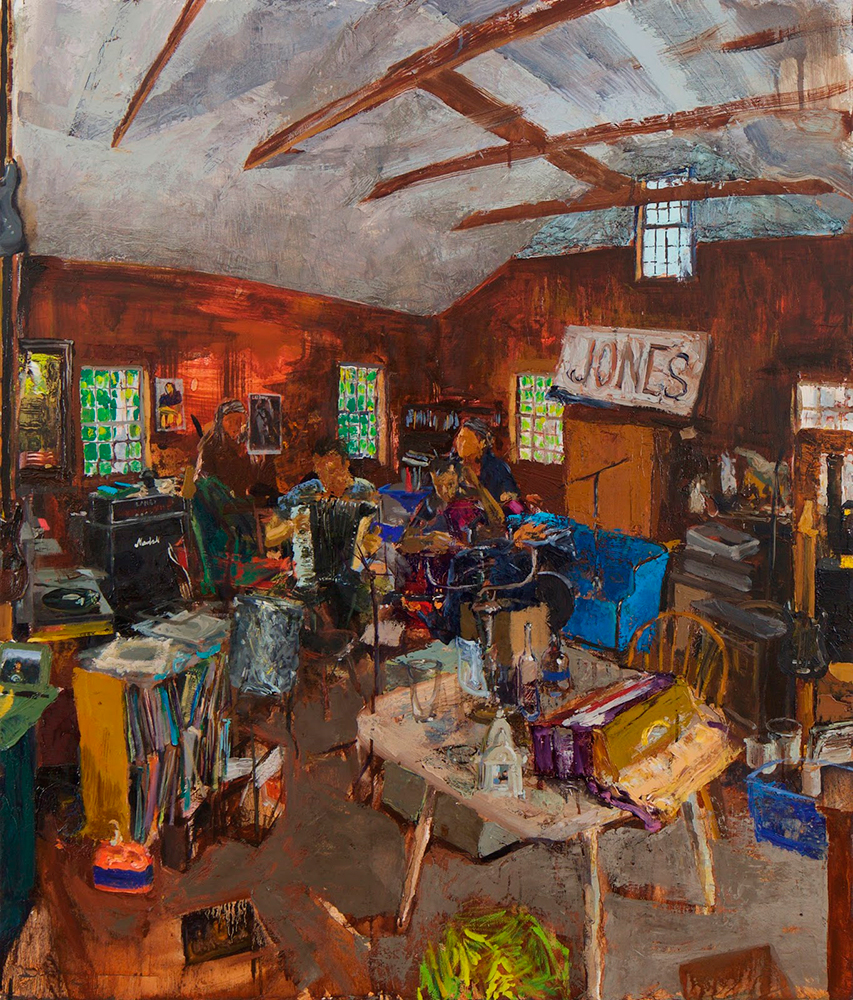
Lil Blue, 2016 ©Gideon Bok
attempts to offer a counter-balance to notions of the good life that include socially damaging means to self-indulgent ends (i.e. unenlightened hedonism) rather than a more
balanced unfolding of modern life, in harmony with other social, economic, and natural systems. Perhaps seeking an answer to the question of “What is the good life?” is futile. Many answers are culture-bound and therefore difficult to translate or apply for other people in other places. To be sure, my own perceptions of what is interesting or useful about living the good life are culturally limited. I know only
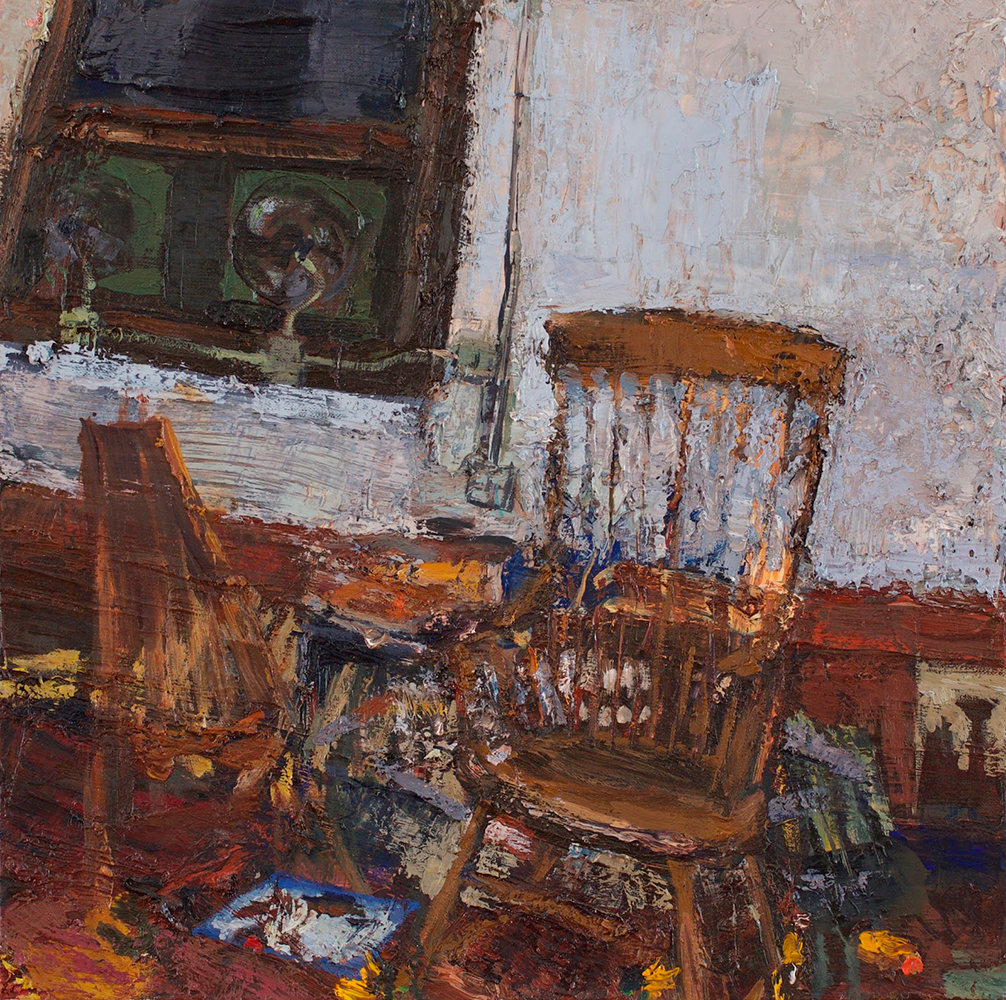
Everyone, 2014 ©Gideon Bok
my perspective. What I hope to do, however, is investigate a few questions, provide some helpful clues, and offer measures of hope in a time of increasing uncertainty.
As a pioneer of humanistic psychology, also called client-centered therapy, Carl Rogers published perhaps his most
influential book On Becoming a Person in 1961 as a personal reflection on 30+ years of professional practice. In one chapter – A Therapist’s View of the Good Life: The Fully Functioning Person – Rogers details certain characteristics he witnessed in people living more fully in their own unique lives. Twenty-five years later, Yi-Fu Tuan published The Good Life, a broader perspective on good living. Tuan examines humanity’s relations to space, place, and community across various cultural contexts. “Everyone wants the good life,” he writes. “How it is conceived varies greatly from culture to culture, and in a complex modern society even from individual to individual.” Like Helen and Scott Nearing, Tuan provides a focus on the agrarian perspective but, unlike the Nearings’ antagonism toward the city, Tuan also embraces the city as a hub of culture and vitality. Whereas Rogers takes a psychological view of the good life, and Tuan approaches the concept from a more cross-cultural perspective, the Nearings’ work can be seen as a case study in can-do Yankee perseverance laced with a practical socialism. Scott Nearing, an economist, first published Man’s Search for the Good Life in 1954. When re-printed in 1974, the book gained a wider audience among a new generation of homesteaders in New England and beyond. These writings and many later “good life” works by and with Helen offered significant inspiration for the adherents of a renewed back-to-the-land ethic. Scott Nearing’s social scientific observations, deeply intertwined with his economic philosophy, viewed the hard work and deep reward of homesteading as one providing the most direct path to good living.
It could be said that what these writers share, each in their own way, are views on sustainable living. Whether through the individual sustainability and resilience of Rogers, the cross-cultural diversity and place-based community analyzed by Tuan, or the calloused hands and clean spirited “bread labor” practiced by the Nearings; all are versions of practical sustainability. A buzzword du jour for
environmentalists, sustainability can be taken here to mean systems of living that provide social and economic security – nested within environmental limits – without jeopardizing the ability of future generations to provide for themselves in similar ways. My hope is that understanding discourses of the good life in tandem with discourses of sustainability will help individuals and communities flourish in their pursuits of Eudaimonia, variously conceived. Such pursuits can, in turn, provide base levels of material and psychological security without denying other entities – present and future systems, human and non – the ability to do the same.
ROGERS: Launching Fully into the Stream of Life
“The good life is a process, not a state of being,” writes Carl Rogers. “It is a direction, not a destination.” Along this path people develop their own conclusions about what “good” might come from a given route. It is “selected by the total organism, when there is psychological freedom to move in any direction” (emphasis in original). The general characteristics of such a direction “appear to have a certain universality,” says Rogers. This life-long path is one of regular renewal in light of new experience. Rogers calls it Becoming – integrating one’s “total organism” into a cohesive yet resilient and adaptive existential whole. The good life as such tends to share three general characteristics: An increasing openness to experience; an increasing tendency to live in the moment; and an increasing trust in one’s self “as a means of arriving at the most satisfying behavior in each existential situation.”
An increasing openness to the variety of life experiences is not just about physical experience but the full breadth of psychological experience. This includes a willingness to engage in positive emotions (e.g. courage, empathy, tenderness, awe) as well as negative emotions or mental
states (e.g. fear, dissonance, discouragement, pain). Such
openness is “the polar opposite of defensiveness,” says Rogers, and a key marker of the good life along with “increasingly existential living” which, given this lack of defensiveness, affords moment-to-moment opportunities to live life anew. Therapeutic clients of Rogers would “not infrequently” express the feeling that “What I will be in the next moment, and what I will do, grows out of that moment, and cannot be predicted in advance either by me or by others.” Put another way, Rogers describes such existential fluidity as the self emerging “from experience, rather than experience being translated or twisted to fit preconceived self-structure” (emphasis in original). In the process of becoming, Rogers says, a person acts as a participant in and observer of moment-to-moment experience rather than trying to master or control it.
The good life is “not a life for the faint-hearted,” says Rogers. This underscores the distinction between a meaningful, reflected-upon good life and the pleasure-motivated, short-term goals associated with what philosopher William Irving refers to as unenlightened hedonism – seeking pleasure while avoiding the negative, messy (and often essential) parts of robust life experience.
A growing trust in one’s self acts as “a means of arriving at the most satisfying behavior in each existential situation,” says Rogers. Rather than relying on guiding principles “laid down by some group or institution,” living well affords individuals the ability to develop and enact self-trust in response to new situations “because they discover to an ever-increasing degree that if they are open to their experience, doing what ‘feels right’ proves to be a competent and trustworthy guide” to truly satisfying behavior. The “complex weighing and balancing” of one’s lived experience comes to bear on any immediate moment as a complex computation,
and not an infallible one, admits Rogers. But, because the good life also includes openness to experience, “any errors, any following of behavior which was not satisfying would be quickly corrected. The computations, as it were, would always be in process… because they would be continually checked in behavior.”
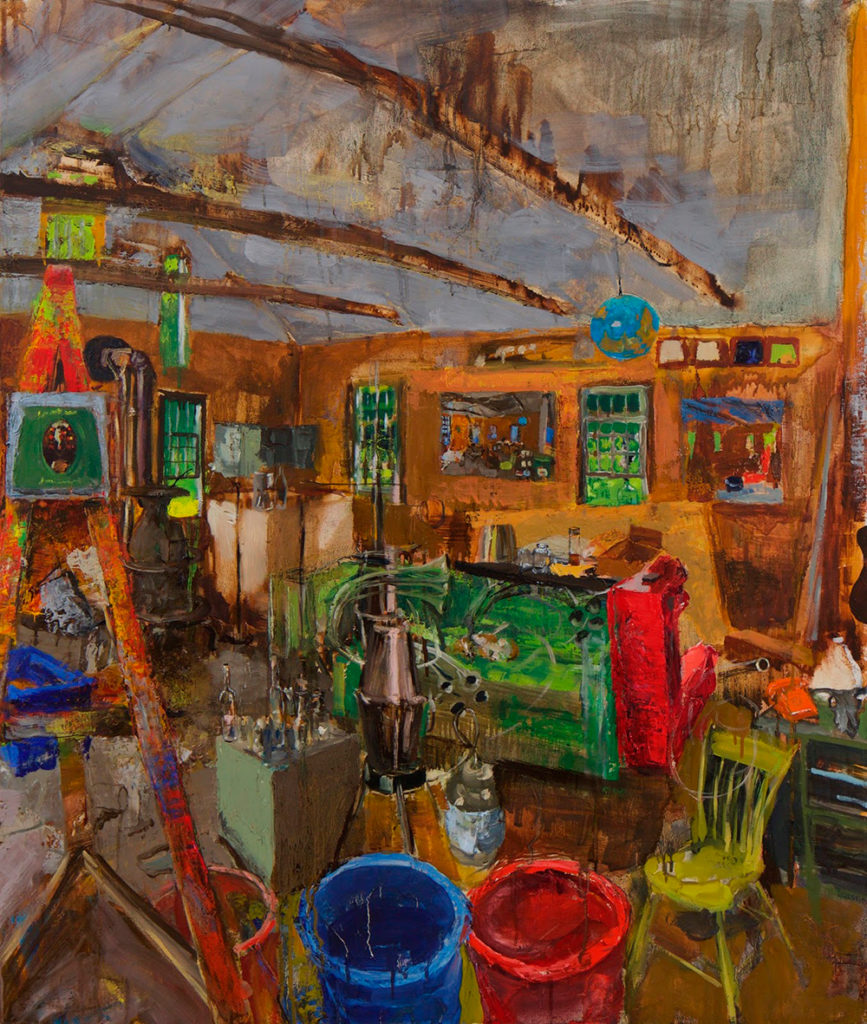
Still #1, 2016 (work in progress) © Gideon Bok
A person engaged in this process of living well, one who is able to view the present moment from a perspective of psychological freedom, “moves in the direction of
becoming a more fully functioning person,” says Rogers. She or he is “completely engaged in the process of being and becoming.” This is not to say that external stimuli don’t factor into one’s judgment but does suggest an inverse relationship between freedom of choice and behaviors influenced by fear, defensiveness, or dogmatic norms. A more fully functioning person “would almost certainly not be a conformist,” says Rogers. The good life is also imbued with creativity and resilience. In the face of adversity, such a person is “most likely to adapt and survive under changing environmental conditions.” He or she would be creative in making “sound adjustments to new as well as old conditions,” says Rogers, and “a fit vanguard of human evolution.”
Living the good life, for Rogers and others, is a process of cultivating richness. This includes a robust diversity of life experience and, for Rogers, adjectives such as happy, contented, blissful, and enjoyable “do not seem quite appropriate to any general description of this process.” Happiness, contentment, bliss, and joy may emerge in due course but more appropriate adjectives, suggests Rogers, include enriching, exciting, rewarding, challenging, and meaningful. Living well involves the courage to launch oneself “fully into the stream of life.” When a person is inwardly free, says Rogers, he or she “chooses as the good life this process of becoming.”
TUAN: The Arc of Choice
“The good life haunts us,” writes the humanistic geographer Yi-Fu Tuan. Everything we do “is directed consciously or subconsciously, toward attaining it.” In the Western world, Tuan says, the good life “is envisaged, historically, in a limited number of ways. One of them is environmentalism, which sees the good life as a consequence of a special type of physical setting.” Connection to nature, via the raw beauty of wilderness or the constructed nature of urban greenspace,
includes a wide spectrum of nature-linked settings and activities. Focusing on activities, such as those of the traditional farmer, rather than settings is another way to conceive of the good life. The yeoman is a lingering, if over-romanticized, “icon of the good life,” says Tuan.
Even though most urban people remain disconnected from the true toil of husbandry, the growing popularity of farmers’ markets and community-supported agriculture programs suggests a renewed appreciation for small-scale farming. For many, this includes a growing concern for provenance – knowing how and where food is produced – as much as it can be a rejection of corporate agriculture and its stark environmental burdens. The good life, in this way, is not simply one of leisure and convenience but one of values on display as sustainable practice. It requires hard work. While various practices may or may not be as “green” as one might hope, over the arc of one’s life, the compass of good living points toward a true north of sustainability and resilience. What counts – the virtuous choice – is visible in the direction of a series of choices rather than any particular steps or missteps along the way. This includes a kind of openness, says Tuan, to “certain kinds of hard truth.” Such a direction points us away from naïve comfort and splendor – one enjoyed in “easy conscience” at the expense of others, as Tuan suggests – to a pathway of awareness and accounting for the costs of our actions “in the spoliation of nature and in the burden laid on people less fortunate than we.”
Connection to other people – relationship – is a crucial component for living well. Contrary to Jean-Paul Sartre’s oft-misinterpreted assertion that “Hell is other people,” Tuan posits the opposite. “Heaven is other people,” he says. The full experience of living well “is necessarily filled with
pictures of human contact – erotic, affectional, courtly, and intellectual.” Lovers, friends, courteous relations with strangers, and stimulating interaction with people far or near all lead in the direction of good living. Connection to place is equally compelling. A healthy co-dependence on both the
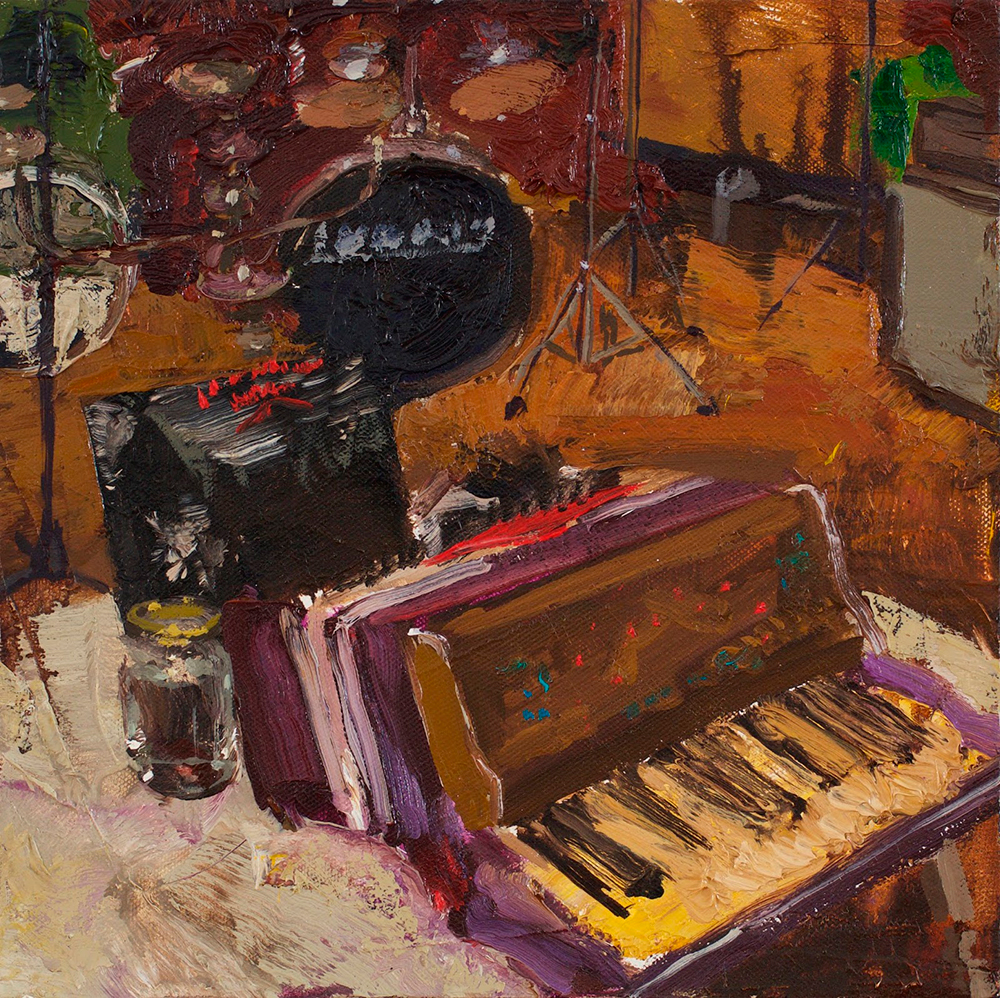
Broken Arrow and Butti, 2015 ©Gideon Bok
constructed and natural amenities of a home base has allowed individuals and cultures to flourish since the transition of humans as a largely hunter-gatherer species to one of
agriculture and centers of urban commerce. Few livelihoods are as directly connected to place than that of life on the farm.
“It is easy to be sentimental about the farmer’s life,” says Tuan, because the vagaries of country life have been written “almost entirely by members of the leisured class.” These are people “who know little, if anything, about the hardships of manual labor.” Yet the mystique persists. Land has virtue – spirit – and provides food, says Tuan; “Nothing can be more basic.” Acknowledging the culture of consumerism in full force by the mid-1980s, Tuan contrasts the noble (though often inaccurate) portrayal of farm life to that of corporate manufacturers’ “catering to appetites that may have to be invented by advertising.” The small-scale agriculturalist, compared to the mono-cropping industrial version who grows relatively little in the way of their own food supply, can more easily connect their daily chores with the food set upon the dinner table, suggests Tuan. The farmer “enjoys a degree of psychological security unknown to people of other occupations (such as salesmen or scholar) in which the linkages between exertion and the staff of survival are far more tenuous.” Echoing contemporary work by fiery farmer populists like Wendell Berry, Tuan suggests that
…a life in which what one does is so clearly tied, by a succession of discernible steps, to what one eats also appears more serious and in closer touch with reality than one in which the connections are remote and unperceived. The farmer does not live in a world of make-believe; his life is not a game. By contrast, the world of (say) an insurance agent, like that of a child, is rich in make-believe and miracles.
Despite what may seem like an idealization of rural life, Tuan also very much prizes the city. Good living from this perspective is not either/or so much as both/and. “The good life is lived in the city,” Tuan writes; “…nothing compares with the grandeur of the city.” It is not that country people can’t or don’t appreciate contemplating the good life like their more urbane counterparts. It is simply that city people, having more direct access to many modern conveniences, often have more leisure time. Farmers, Tuan suggests, have too much work to do. Farm life is a life of struggle that requires daily resilience in light of nature’s occasional unpredictability. City life, by contrast, “offers excitement and glamor, the root meaning of which is magic,” says Tuan. “What is magical is unnatural. The city is magical in its successful defiance of nature’s rhythms.”
The good life of the city offers new and unique experiences, strangers from strange places to engage with, a constant churn of sound, light, and bustle. Such unnatural existence is antithetical to rural living where stability and continuity are strongly favored. What works for some in their pursuit of good living does not work for others. A reminder of what Helen and Scott Nearing often said of their own pastoral pursuits – theirs was a good life, not the good life. One’s conception of what makes a good life often stems from foundational experience. Though the good life is fulfilled by an openness of experience from one moment to the next, as Rogers suggests, our perceptions are often deeply tied to past experience and sense of cultural belonging or cultural cognition. “The good life is a serious life,” says Tuan, “imbued with feelings of reverence that come out of an awareness of momentous events in the past – of a heritage that gives prestige but also imposes obligation.” Given the variety of human experience, the historical awareness and
connection of one cultural group differs from other groups. Virtues abound. To each their own good life.
“The good life need not be heroic or saintly, but if ‘good’ is to retain its moral meaning,” says Tuan, “it cannot be a life devoted merely to the pleasures of the senses. Such a life, in any case, would pall without periodic essays at austerity.”
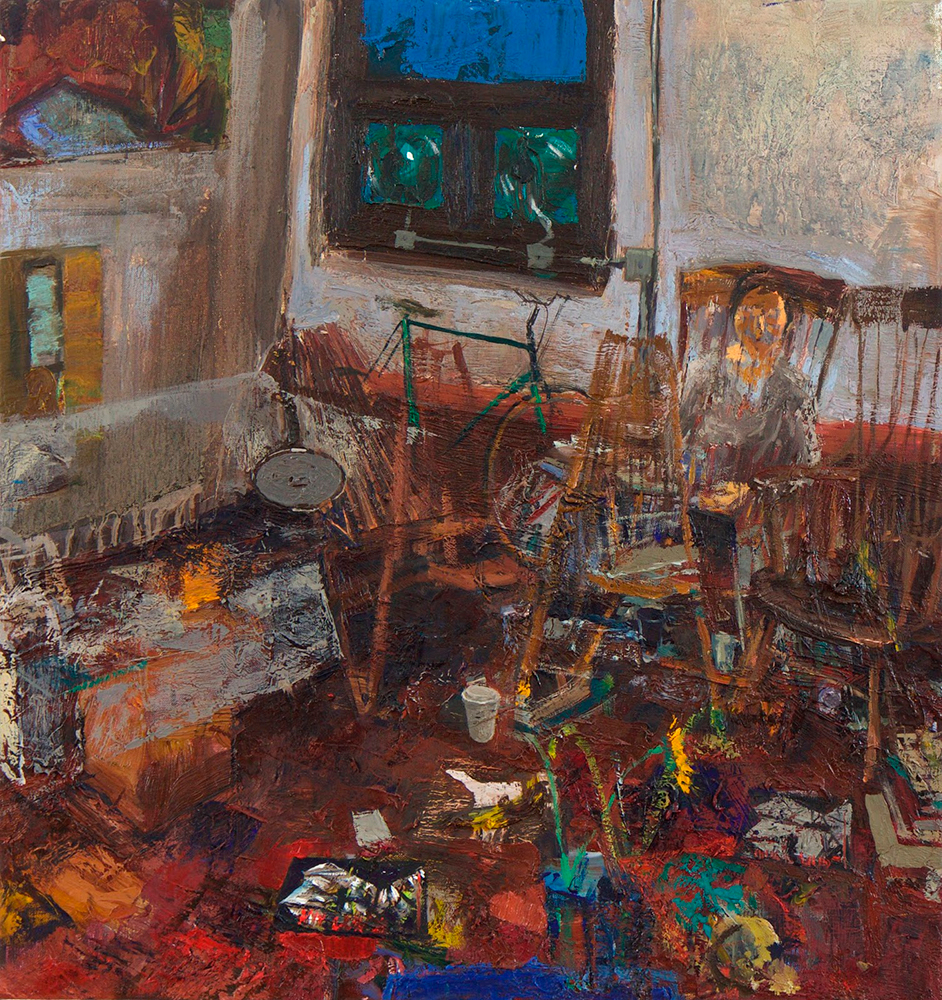
Meghan Brady as a young Grace Hartigan, 2014 © Gideon Bok
Moderate limits on pleasure-seeking, as Stoic philosophy suggests, can actually increase pleasure in other ways. This includes the hard truth of ecological limits. Creations of modern life, including societies and their economies, have limits imposed by the laws of thermodynamics – the laws of nature. Though such limits are generally unwelcome in a
consumer society, the truth of their existence remains.
The ultimate austerity, old age, is one that even the best of us cannot avoid. Mature people, rather than the young, says Tuan, are “better equipped to raise the question” of “What is the good life?” and to explore it thoroughly because “thinking about the good life must be based on what we know and have already experienced.” In trying to envision the good life in any detail, “the future… has to draw heavily on the past.” Planning ahead, says Tuan, entails taking stock and reflecting on “those things that seem to us least ambiguously good, of knowing the historical conditions that have made them possible, and then trying to see how these conditions can be expanded or changed so that the good things might flourish.” But how to create the necessary conditions for good living? Tuan considers three broad categories – body, personal relations, and world – “corresponding roughly to the sensual, the moral, and the aesthetic.”
Tuan’s book is reflective and draws on an array of cultural touchstones, including the inherent brutality of civilized society. Civilization, he says, “tends to destroy plurality: it eradicates, for example, local cultures and peoples.” The sheer scale of destruction that civilization has leveled on many of Earth’s ecological systems is “without parallel.” Yet, civilized society also produces geniuses, saints and “the severest and most clear-eyed critics of civilization.” Even those who denounce the inherent destruction of so-called civilized life, “Particularly as they are manifest in the Western world,” says Tuan, are also products of civilization. It is this relative sturm-und-drang of city life – with its commercialism, commotion, and occasional dependence on drink and drug – that Helen and Scott Nearing chose to leave behind. Though they, like Tuan, enjoyed extensive travel and intellectual engagement with a lofty crowd of urbane comrades, the Nearings’ home base – first in Vermont and later on the coast of Maine – provided an explicit rejection of city life and, as such, connection with the daily toils and rewards of self-sufficiency and a rewarding rural livelihood.
NEARINGS: Living at Five Levels
The essence of Scott Nearing’s vision of the good life is summarized in the introduction to the second edition of his book Man’s Search for the Good Life. Living well comes in many varieties, Nearing stresses, and “the good life is an ideal toward which people look and for which they strive.” Such a pursuit involves “a pattern of conduct which, if followed, will provide advantages for its devotees.”
In laying out this broad vision – one that stems from his own vigorous opposition to “discrimination, poverty, exploitation, and colonialism” – Nearing asserts several underlying assumptions. Pursuing the good life is, for its individual or collective adherents, more rewarding than other ways of being. People are able to distinguish good from less-good options for living. There is a freedom of choice in distinguishing good from not so good. In knowing the difference between bad and good, people will tend to choose the good (“this from Socrates,” says Nearing), and one who chooses the good will seek to shape the life of oneself and one’s community according to the requirements of choices that have been made. With a measure of hope, Nearing also asserts that if one fails to achieve the good life today, one can try again tomorrow; and, finally, “through effort, experiment and experience men [sic] will grow to a stature which makes the good life more attractive as well as more attainable.” These are the aspirations of an idealist, Nearing says, one striving “for the unity of theory and practice.”
If people today know the work of Scott Nearing, it is likely in the context of the back-to-the-land movement of the 1960s and 1970s. The books he and his wife Helen published throughout the 1970s were, for many, as essential as Stewart Brand’s Whole Earth Catalog and other publications propagating the ideals of rural self-sufficiency. Such a marriage of theory and practice emerged across North
America, Europe, and other industrialized regions of the global north and west, often acting as a counterbalance to rampant consumerism (i.e. the neoliberal economic ideals of free market capitalism). Few places saw this trend take hold like northern New England, from Vermont to mid-coast Maine. Such deep roots continue to bear fruit.
Scott and Helen Nearing’s homesteading narratives bookended the 1970s with a reissue of 1954’s Living the Good Life in 1974 and Continuing the Good Life in 1979. The Nearings moved from Vermont to the Penobscot Bay region of Maine to continue living in, working with, and fostering a community of like-minded compatriots around the virtues of living well. The Good Life Center, located at the Nearing’s former home at Forest Farm in Harborside, Maine, continues as a living testament to the Nearings’ ethics and ideals. The reputation of the Nearing’s idealism – though certainly not a naïve idealism – often obscured the realities of their challenging lifestyle. A life of chopping wood, hand working the soil, strict vegetarianism, and abstinence from intoxicants such as alcohol, caffeine, and tobacco (or anything else) was not the life for everyone, especially in the freewheeling 1970s. It is the inheritance of this legacy – one of hard work and self-mastery – that many modern homesteaders advocate for (and disagree about) in the ongoing practice of Nearing-like homesteading traditions.
The Nearings made “serious and various attempts to live at five levels” in both Vermont and Maine. These included living with nature; daily stints of bread labor; carrying on professional activities such as writing and correspondence; being neighborly and engaging with their “fellow citizens;” and “unremitting efforts to cultivate the life of the mind and spirit.” Such a good life then entails attention to environmental, economic, intellectual, social, and spiritual activities. A concern for not just human well-being but the
goodness of the larger biota was also evident in their conception of living well. Scott Nearing writes:
We also did our utmost to develop what we called the spirit of man. It is not enough to have a good earth supporting and improving a good society. It is also necessary that the various life forms (including the human) which inhabit the earth, should have a maximum opportunity to live a good life. Life in any community becomes “good” in so far as it utilizes and conserves nature, improves society and expresses itself in the good health of the inhabitants, their heightened sense of social responsibility and their success in developing successive generations of human beings willing and eager to live and help others live at the most productive and creative level that can be established and maintained by the present-day human family.
Thinking Ahead
The good life includes ongoing reflection and engagement with personal, societal, and planetary systems in ways that promotes the benefits of those systems and perpetuates the flourishing of other current and future generations. Through an authentic questioning of the true impacts of one’s daily activity, creativity in how we modify such actions as a way to promote future well-being, and engagement with others who are also pursuing ways of good living, we can truly create a better world. In doing so, those who enact the virtues of living well promote the goodness inherent in the world as it is and take part in sustaining the benefits and overcoming the collective challenges many face. The good life is an idealistic pursuit, open to everyone, but most successful for those willing to foster resilience through hard work and honest reflection on the virtues and vices of mainstream
society. This seems particularly true in the Global North where resource consumption far exceeds the carrying capacity of ecological limits so often annihilated by the earthmovers of Progress and Growth.

Blackstar, 2016 (work in progress) ©Gideon Bok
In a consumer culture, many people get caught up in pursuing a version of happiness based more on the accumulation of material goods, power over others, ego, and domination of natural systems than the more altruistic pursuits of good living. Equating such hedonic tendencies to “the good life”
makes a clear definition of the phrase challenging. A good life certainly includes a measure of financial security but it also contains a wealth of wisdom, empathy, spirit, community, and freedom of choice, up to and including a healthy sense of agency or self-efficacy. As global indicators such as the Gross National Happiness Scale, Happy Planet Index, and the Social Progress Index suggest, once the basic provisions of food, shelter, and clothing are in ready abundance, the accumulation of excess material wealth does not generally add to a greater sense of subjective well-being. Living well includes consideration for wider systems, an alternative to conspicuous consumption and ephemeral pursuits of self-satisfying pleasure. A working definition of the good life then remains as the freedom to experience one’s best vision of living so long as it does not impede on others’ ability (present or future) to pursue those same or similar goals.
As Barry Lopez suggests in The Rediscovery of North America, perverse versions of good living – i.e. modern pursuits of leisure and convenience – are rooted in a legacy of “lawless exploitation” of finite natural resources via the tradition of European colonialism. In contrast, pursuits of good living described here can be seen as inherently sustainable and supportive of natural systems – cohabitative rather than domineering, adult rather than adolescent. Closer to this spirit of a good life are ways of being that balance out greed and selfishness with the benefits of community resilience and individual character. This is the direction in which the good life moves, hand-in-hand with hard truths, hard work, and humility in the face of much deeper and older natural systems. Always present, always becoming.
00
James T. Spartz is a teacher, writer, researcher, and Driftless Area native now in coastal Maine. Prior to graduate school at the University of Wisconsin, he was a worker-owner at an organic whole-grains bakery, hardware store sales associate, social worker, and performing songwriter – but not all at once. Spartz is currently an Assistant Professor of Environmental Communication at Unity College.
Gideon Bok is an artist. He graduated from Hampshire College (BA) and the Yale School of Art (MFA.) He has received fellowships from the Guggenheim Foundation, and the American Academy of Arts and Letters, among others. He paints, manages an organic farm, and teaches art.


























